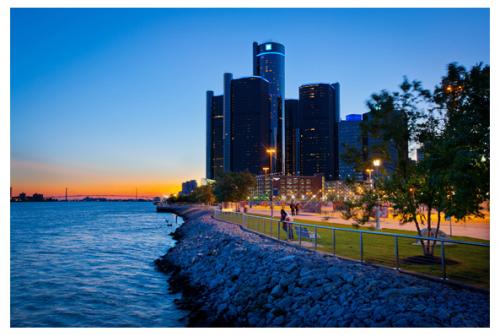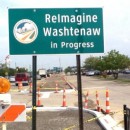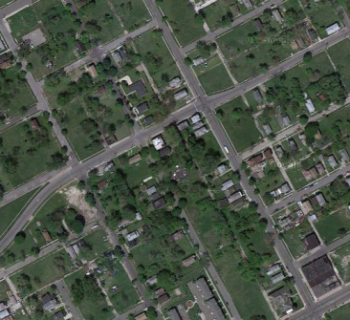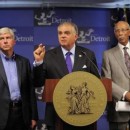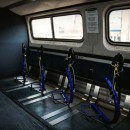DETROIT — The Riverfront in Downtown Detroit used to be a dormant asset until the Detroit Riverfront Conservancy and other organizations brought it to life by creating the ever-popular Riverwalk.
Now, with the demolition of Ford Auditorium leaving a hole in the mostly built area, one local organization is looking for a way to vitalize the west portion of the Riverfront, between Joe Louis Arena and the Renaissance Center.
The American Institute of Architects (AIA) Detroit Chapter, and their unique Urban Priorities Committee (UPC), are looking for your input on they might vitalize this area once again.
According to the UPC's website, "the site lost its prominence as the city’s town square when a new park was created a couple of block to the north. Campus Martius is now the location of the Christmas Tree, skating rink and concerts. People in the area love the space along the river because of the memories associated with it but the memories are not enough to attract new functions. How can the city capitalize on this unique site and use the space to connect and vitalize the surrounding area?"
Their specific request: Create a vibrant public space that connects the city to the riverfront.
"In a city of over 143 square miles, connections are critical," the website states. "Physical, visual and emotional connections influence the viability of an area and its ability to attract inhabitants. Connections keep areas vital and accessible."
Users of this space vary greatly, from fishermen to business people, festival-goers to neighbors visiting from Canada, so the AIA urges you to keep everybody in mind. The UPC says the program is intentionally vague because they want to solicit creative solutions that aren't bounded by many rules. They say contestants can approach the challenge from an architectural, urban planning, or artistic perspective, or any combination of the above, and more. The UPC is encouraging multi-disciplinary teams, likely as a way to infuse the aforementioned perspectives, and to "engage the unique challenges of the site."
"The UPC committee’s objective is to throw out preconceived notions of what our city is or what it should be and to challenge people to think creatively about what is possible," the website reads. "When we were mulling over the competition program and site we wanted to focus on a significant space in the city and create a challenge that would interest our friends and colleagues around the world and provide inspiration for our local citizens and lawmakers."
The Committee references New York's High Line Project as their inspiration. This project in New York City's Manhattan borough is a defunct rail line the city had intended to tear down, instead, through the hard work of community advocates, the city embraced the infrastructure and turned it into a 1.45-mile-long, elevated park instead.
The UPC hopes contestants will embrace the site's existing architecture.
"Our intention is to look forward and demand that this very important space at the heart of our city be one of the most amazing space in the world," the website reads. "As we saw with the Ground Zero competition in New York, design competitions can be a vehicle for healing and getting people excited about the future."
While the project doesn't guarantee bringing the winning idea to a reality, the first three prize winners have a chance of winning up to $5,000 and being able to lecture at an AIA event. The UPC says the contest is mostly a means to generate ideas, which could in turn spur action from city officials or private investors to help turn the area into one that attracts and retains a daily community of people looking to enjoy one of the city's greatest assets.
For a full rundown of the program, rules, requirements, jurors and entry instructions, and deadline, check out the AIA's Detroit by Design website. Good luck!


